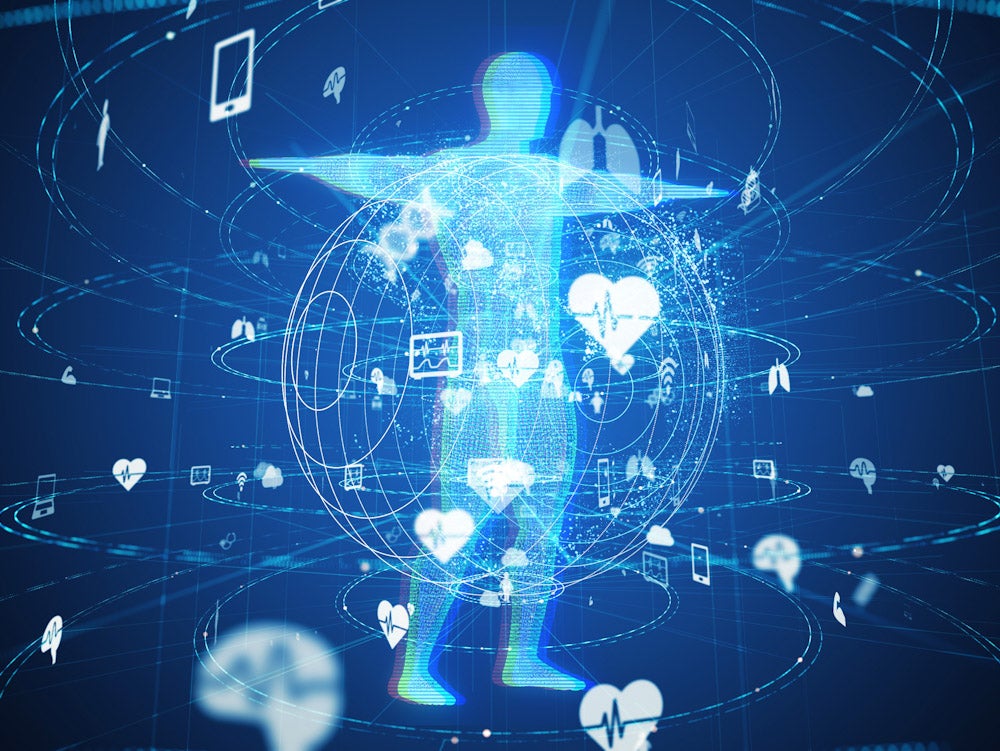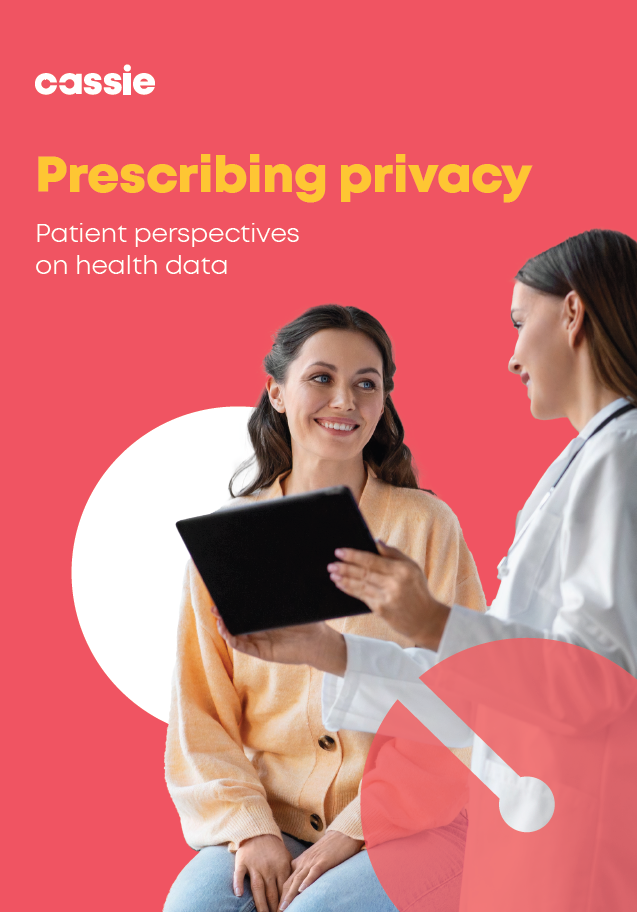
A digital twin of the human body presents immense potential for the future of diagnostics. Data gathered from a wide range of targeted areas builds a complete profile of the subject. When data is gathered over time, it can be used in tandem with artificial intelligence and machine learning to pinpoint any areas that may need attention, creating a specific treatment plan for that individual.
Digital twin technology is already used by many industries, from automotive and oil & gas to construction. When applied to healthcare, a digital twin would effectively provide someone with a predictive maintenance system for their body. Many technologies that would contribute to the digital twin area are already in use, including heart-rate monitors, wearables, sleep pattern apps, and portable diagnostics devices.
While a digital twin will likely be able to provide a complete analytics reading for the body one day, patients may be hesitant to share particularly sensitive information. Furthermore, when trying to generate a digital twin of the body, consent is required from the patient to confirm that their personal data can be used and shared with parties they have permitted. Without consent from the patient on their data, the concept of the digital twin in healthcare effectively falls apart.
“You might have someone’s weight, height, what they have eaten this week, their resting heart rate,” says Katherine Pomfret, head of communications at Cassie. “Legally, you need to receive consent for each different piece of data. What happens with healthcare is people are happy to share some information, but nobody is going to say a blanket ‘yes’ to everything. There are some things that people are more sensitive about, while there are other areas where they can see a benefit to themselves in sharing that data.”
Digital twins and healthcare data
Trials are underway for digital twins in healthcare and already delivering promising results. At this year’s American Diabetes Association annual scientific session, clinical trial data was presented that analysed 199 diabetes patients for an average of four years. At the start of the study, patients had an average A1C level of 9%.
During the study, the Twin Health’s Whole Body Digital Twin platform continuously updated and analysed the digital model to identify potential problems in each patient’s metabolism. Data was used to create a personalised treatment plan or lifestyle suggestions.
After six months of using digital twin technology, researchers recorded a drop below 6.5% in A1C levels for 95% of patients. Researchers reported an average drop of 3.3 points, compared to just 0.39 in the trial’s control group using existing treatments for Type 2 diabetes.
A further area of healthcare where real-time data for quick intervention or preventative care is oncology. A digital twin framework could predict whether a patient is more likely to develop specific types of cancer, and also help healthcare professionals formulate a suitable plan and monitor them throughout their treatment.
Similar technology is also beginning to be used to analyse human gut health. The composition of microbes across different sections in the centre of the gut is still not fully understood by researchers. Advancing digital twin technology to monitor gut health could be revolutionary for patients who suffer from digestive issues where conventional health treatments have not worked.
Yet a digital twin is not an off-the-shelf product. With a combination of technologies all working together to gather data that is stored centrally, healthcare companies need a platform capable of managing these vast volumes of information.
What adds considerable complexity is that patient data comes from myriad platforms, systems, and touchpoints, which can make it challenging to build a unified profile for an individual.
“There are many companies with many databases storing many different pieces of information on a patient or data subject,” explains Igor Lopez, CMP solution expert at Cassie. “The key is to have a platform that can integrate with all these silos of data and consolidate all that into one single version of the truth.”
Data management solutions for digital twins
Cassie is a Consent Management Platform (CMP) on the cloud. Cassie works in real-time across numerous data sources from different platforms and devices, building the unified data profile of the patient that is vital for the digital twin.
“Cassie can connect with pretty much every single third-party platform out there for both collecting data on their own or in the data,” says Lopez. “As long as you have a RESTful API, we will be able to connect with them. We can consolidate all that information into one single record of the truth for preferences.”
In addition, Cassie ensures compliance with data protection regulations that apply to both where the information was collected and where it is stored, even if they are in different legal jurisdictions or other languages. Failure to comply with data protection laws can result in a significant fine for the companies involved. Cassie covers all data regulations worldwide, including GRPR in Europe, HIPAA in the US, PDPA in Singapore, POPIA in South Africa, and PIPEDA in Canada. Ensuring compliance with these regulations is one way of building trust with patients for using their health data.
Due to patients being in control of consent with Cassie, what is accessible may differ from one party with access to the next depending on what the patient has deemed sharable. Cassie also enables patients to update their preferences whenever required.
“You need a granular tool that allows you to take as much information as possible, and then it’s about consent. Who do I consent to look at my data, or use it or sell it?” adds Lopez.
“It is all about building trust in the company that it is collecting data on your behalf. Trust builds confidence. If you trust that company, you are more likely to share information with them and for them to process it in the way that you want. “It is all about granularity, transparency, and building trust. Cassie delivers all of these.”



